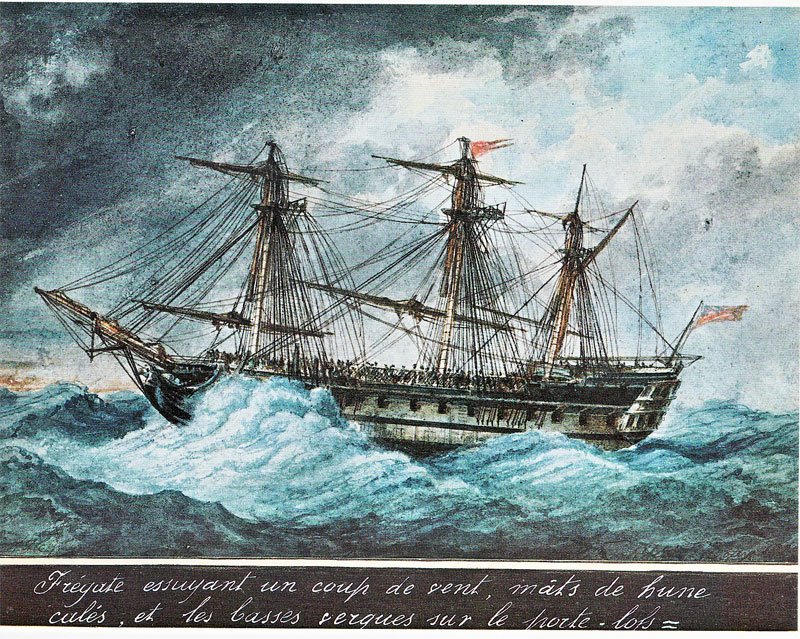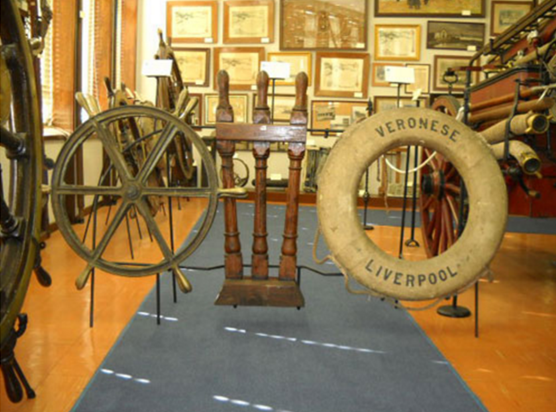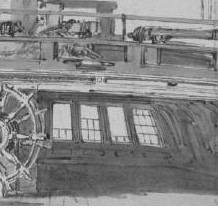-
Posts
68 -
Joined
-
Last visited
About rybakov
- Birthday 06/05/1954
Profile Information
-
Gender
Male
-
Location
Portugal
Recent Profile Visitors
The recent visitors block is disabled and is not being shown to other users.
-
 rybakov reacted to a post in a topic:
HMS Tiger 1747 by Siggi52 - 1:48 - 60 gun ship from NMM plans
rybakov reacted to a post in a topic:
HMS Tiger 1747 by Siggi52 - 1:48 - 60 gun ship from NMM plans
-
 rybakov reacted to a post in a topic:
HMS Indefatigable 1794 by Blue Ensign - FINISHED - Vanguard Models - 1:64 scale
rybakov reacted to a post in a topic:
HMS Indefatigable 1794 by Blue Ensign - FINISHED - Vanguard Models - 1:64 scale
-
 rybakov reacted to a post in a topic:
HMS Tiger 1747 by Siggi52 - 1:48 - 60 gun ship from NMM plans
rybakov reacted to a post in a topic:
HMS Tiger 1747 by Siggi52 - 1:48 - 60 gun ship from NMM plans
-
 rybakov reacted to a post in a topic:
HMS PEGASUS by giampieroricci - Scale 1:36 - Swan-Class Sloop from plans by David Antscherl & Greg Herbert
rybakov reacted to a post in a topic:
HMS PEGASUS by giampieroricci - Scale 1:36 - Swan-Class Sloop from plans by David Antscherl & Greg Herbert
-
 rybakov reacted to a post in a topic:
HMS PEGASUS by giampieroricci - Scale 1:36 - Swan-Class Sloop from plans by David Antscherl & Greg Herbert
rybakov reacted to a post in a topic:
HMS PEGASUS by giampieroricci - Scale 1:36 - Swan-Class Sloop from plans by David Antscherl & Greg Herbert
-
 rybakov reacted to a post in a topic:
HMS Indefatigable 1794 by Blue Ensign - FINISHED - Vanguard Models - 1:64 scale
rybakov reacted to a post in a topic:
HMS Indefatigable 1794 by Blue Ensign - FINISHED - Vanguard Models - 1:64 scale
-
 rybakov reacted to a post in a topic:
Soleil Royal by Hubac's Historian - Heller - An Extensive Modification and Partial Scratch-Build
rybakov reacted to a post in a topic:
Soleil Royal by Hubac's Historian - Heller - An Extensive Modification and Partial Scratch-Build
-
 rybakov reacted to a post in a topic:
HMS Tiger 1747 by Siggi52 - 1:48 - 60 gun ship from NMM plans
rybakov reacted to a post in a topic:
HMS Tiger 1747 by Siggi52 - 1:48 - 60 gun ship from NMM plans
-
 rybakov reacted to a post in a topic:
HMS Tiger 1747 by Siggi52 - 1:48 - 60 gun ship from NMM plans
rybakov reacted to a post in a topic:
HMS Tiger 1747 by Siggi52 - 1:48 - 60 gun ship from NMM plans
-
 rybakov reacted to a post in a topic:
HMS PEGASUS by giampieroricci - Scale 1:36 - Swan-Class Sloop from plans by David Antscherl & Greg Herbert
rybakov reacted to a post in a topic:
HMS PEGASUS by giampieroricci - Scale 1:36 - Swan-Class Sloop from plans by David Antscherl & Greg Herbert
-
 mtaylor reacted to a post in a topic:
Looking for plans or possible models of Magellan's ships.
mtaylor reacted to a post in a topic:
Looking for plans or possible models of Magellan's ships.
-
 J11 reacted to a post in a topic:
Looking for plans or possible models of Magellan's ships.
J11 reacted to a post in a topic:
Looking for plans or possible models of Magellan's ships.
-

Looking for plans or possible models of Magellan's ships.
rybakov replied to J11's topic in Nautical/Naval History
Perhaps this(not very clear) view of Lisbon around 1500/1510 will help in having a better idea of the look of those ships https://pt.wikipedia.org/wiki/Ficheiro:Lisboa_1500-1510.jpg hope that helps Zeh -
 mtaylor reacted to a post in a topic:
HMS Bellona 1760 by SJSoane - Scale 1:64 - English 74-gun - as designed
mtaylor reacted to a post in a topic:
HMS Bellona 1760 by SJSoane - Scale 1:64 - English 74-gun - as designed
-
 druxey reacted to a post in a topic:
HMS Bellona 1760 by SJSoane - Scale 1:64 - English 74-gun - as designed
druxey reacted to a post in a topic:
HMS Bellona 1760 by SJSoane - Scale 1:64 - English 74-gun - as designed
-
 AON reacted to a post in a topic:
HMS Bellona 1760 by SJSoane - Scale 1:64 - English 74-gun - as designed
AON reacted to a post in a topic:
HMS Bellona 1760 by SJSoane - Scale 1:64 - English 74-gun - as designed
-
 Louie da fly reacted to a post in a topic:
10th-11th century Byzantine dromon by Louie da fly - FINISHED - 1:50
Louie da fly reacted to a post in a topic:
10th-11th century Byzantine dromon by Louie da fly - FINISHED - 1:50
-
 CaptainSteve reacted to a post in a topic:
10th-11th century Byzantine dromon by Louie da fly - FINISHED - 1:50
CaptainSteve reacted to a post in a topic:
10th-11th century Byzantine dromon by Louie da fly - FINISHED - 1:50
-
 mtaylor reacted to a post in a topic:
10th-11th century Byzantine dromon by Louie da fly - FINISHED - 1:50
mtaylor reacted to a post in a topic:
10th-11th century Byzantine dromon by Louie da fly - FINISHED - 1:50
-
 EJ_L reacted to a post in a topic:
10th-11th century Byzantine dromon by Louie da fly - FINISHED - 1:50
EJ_L reacted to a post in a topic:
10th-11th century Byzantine dromon by Louie da fly - FINISHED - 1:50
-
Perhaps if you reverse the windlass easy leaving the bars in the sockets until one of the bars touches the deck (or use a shorter one in that place to have less bending) it would do the trick. Continuing to enjoy your building and research Zeh
-
 paulsutcliffe reacted to a post in a topic:
Top Rope Pendents
paulsutcliffe reacted to a post in a topic:
Top Rope Pendents
-
Hello all I managed to find in this site https://forum.game-labs.net/forum/62-age-of-sail-historical-discussions/ what Mark was looking for. A painting by Antoine Roux of a frigate in a gale with topgallant masts taken down to the deck, topmasts lowered and mainspars pulled forward by the tacks (unless I translated it wrong) away from the masts. Hope it helps Zeh
-

Cargo tie downs
rybakov replied to Osmosis's topic in Discussion for a Ship's Deck Furniture, Guns, boats and other Fittings
Hello I don't think there would be any eye bolts because the cargo would have to be dragged across the deck to the opening of the hatch to be lifted out. At least on iron hulled ships there were clamps on the sides on wich heavy boards running fore and aft were inserted and wich provided anchoring points for lashings. the cargo would be held againt the sides. To complement the lashings one would use beams cut to size and wedged between crates to further immobilize the cargo. There's more to it but that's the general idea hope that helps Zeh -
Beautifull atmosphere Nils, it has only gotten better as it progressed Regarding buoys, scroll back to January 7th #1837 Zeh
- 2,625 replies
-
- kaiser wilhelm der grosse
- passenger steamer
-
(and 1 more)
Tagged with:
-
Hi Nils I've been following your build with interest, beautiful craftmanship and what's more you manage to capture a flavour of a type of shipbuilding. There were still some very similar (tough some forty years youger) old ships around when I started at sea. Now to buoys: there was a shipwreck near Oporto in 1913 and the helm and a buoy were preserved. Most passangers were saved althoug there were casualties, to add a little atmosphere watch the video of passenger transfer https://www.youtube.com/watch?v=6eVpSa8k1QQ hope that helps Zeh
- 2,625 replies
-
- kaiser wilhelm der grosse
- passenger steamer
-
(and 1 more)
Tagged with:
-
Hello Daniel Not that surprising actually, while not having sailing ship experience I was told that the helmsman would steer by paying attention to the weather leech of the topsail or topgallant (the tallest sail set) of the mast in front of him, never letting it flap (keeping the sails full). The responsability of cheking if there was an excessive ruder angle being used (or if they were straying too much from the course) fell on the officer of the watch, and he would call for a sail trim or order a change of course if needed. He was the one that reallyhad to know how things were going. Cheers Zeh
-
If you want/need any help with portuguese sources I'd be glad to help Zeh
-

Thanks. Yes, I'm very interested in this period. At the moment I'm concentrating on my dromon build, but later I am thinking of building a model from this era - I just haven't worked out which one I want to do. I've read quite a bit in English on the different building styles of ships from various countries during this age, but nothing so far in Portuguese. When I come to do more research on them I might take you up on your kind offer.
And thank you for adding me as...
-
-
Hi Steven, I have been noticing yous interest in the ships of the age of discovery.
-
Hi Jud I agree that there's a lot of chaffing in the the final meters or feet but I think that would not be much more than the wear from the cable on the bottom to and fro as the ship keeps swinging. I recall reading somewhere (can't place it right now) that the part of the cable nearest to the anchor was reinforced to resist chaffing on the bottom, which would also protect the cable in the hawse. I stand corrected on my thoughts about the force necessary to start the ship moving according the the link bellow, it seems that they used "dead slow ahead" too. https://books.google.pt/books?id=4bYoCwAAQBAJ&pg=PA88&lpg=PA88&dq=hms+victory+dimensions+anchor&source=bl&ots=3wfmia38p4&sig=b6wZodd96O1ObvDaZwQ8e2cOiw0&hl=pt-PT&sa=X&ved=0ahUKEwjfoumRwpvNAhXMiRoKHXNHAJkQ6AEIYjAM#v=onepage&q=hms%20victory%20dimensions%20anchor&f=false pages 89 and 90. On page 91 I would rather say the cable paid out to be three to five times the depht of water depending on the type of bottom and weather conditions. I would say they were very much aware of the problem you raise, so much that as soon as they could place the hawseholes in a less awkward position (as we now have them placed) without compromising the strenght of the bows they did - iron construction. Zeh
-
Hi Jud When you start heaving the anchor you're trying to get an object weighing about 1500 tons moving. That's the moment the chain or cable is under the greatest stress, once you get the ship moving it's easy. When the anchor is up and down you have to contend only with someting like 3 tons, unless the anchor is fouled on the bottom, that bend really acts as a brake, but is not under enough stress to damage the cable. As an aside, on ships with weak anchor winches or capstans we would go dead slow ahead as we started heaving to overcome the inertia of the ship then stop and let the capstan carry on. The cat can only be used once the anchor is out of the water so that the tackle can be hooked to the anchor and the main purpose is to move the anchor from the hawseholes (where it would eventually end) to the side of the ship to then be stowed. All the best Zeh
-
Hi Daniel Here goes a detail, I think you can magnify it quite a lot before losing resolution. I'm not sure if what I supposed to be a roller really is or just a shadow, but there seems to be horizontal sheaves on either side of the roller (or opening). By the way, there are signs of some panneling on the low stern board.......... Cheers Zeh
-

2 recent discoveries of ancient ship-wrecks
rybakov replied to Landrotten Highlander's topic in Nautical/Naval History
Well Steven you're right about the origin of the name, but by that date it was a christian name, not a nickname. The Captains or Amirals of discovery expeditions were either squires from D. Henriques' household, or the king's, or members of the gentry and small nobility already having some sailing experience and astronomical knowledge. The only possible exception to that rule was the period 1460-1474 when it was outsourced, so to speak. (death of D. Henrique to the taking charge of the futur John II) So it happens with Vasco da Gama, the son of the governor of a small town, that belonged to the household of the Master of the Order Of Christ which usualy financed the discoveries ..........and reaped its profits. I will check here the MSW thread. I did look up the tapestry, impressive, but the ships seem to be closer to some flemish engravings ( somebody signing W A) with a still medieval scent rather than something new. There's indeed a theory that the portuguese indeed reached Australia in the early 1600s https://en.wikipedia.org/wiki/Beyond_Capricorn If I can be of any help don't hesitate Zeh -

2 recent discoveries of ancient ship-wrecks
rybakov replied to Landrotten Highlander's topic in Nautical/Naval History
I'd like that, thank you. After a long time away from that time period my interest is slowly returning. My interest faded because no one could even agree on what a caravel looked like and how it would manoeuvre and much of the discussion was biased, i.e. the portuguese greatness and uniqueness were the aims taking the discussion out of the european context. (forty some years later I still find I am biased). A few years back I found Texas A&M research and I have been following their research throug Academia.edu. All the best Zeh
About us
Modelshipworld - Advancing Ship Modeling through Research
SSL Secured
Your security is important for us so this Website is SSL-Secured
NRG Mailing Address
Nautical Research Guild
237 South Lincoln Street
Westmont IL, 60559-1917
Model Ship World ® and the MSW logo are Registered Trademarks, and belong to the Nautical Research Guild (United States Patent and Trademark Office: No. 6,929,264 & No. 6,929,274, registered Dec. 20, 2022)
Helpful Links
About the NRG
If you enjoy building ship models that are historically accurate as well as beautiful, then The Nautical Research Guild (NRG) is just right for you.
The Guild is a non-profit educational organization whose mission is to “Advance Ship Modeling Through Research”. We provide support to our members in their efforts to raise the quality of their model ships.
The Nautical Research Guild has published our world-renowned quarterly magazine, The Nautical Research Journal, since 1955. The pages of the Journal are full of articles by accomplished ship modelers who show you how they create those exquisite details on their models, and by maritime historians who show you the correct details to build. The Journal is available in both print and digital editions. Go to the NRG web site (www.thenrg.org) to download a complimentary digital copy of the Journal. The NRG also publishes plan sets, books and compilations of back issues of the Journal and the former Ships in Scale and Model Ship Builder magazines.




